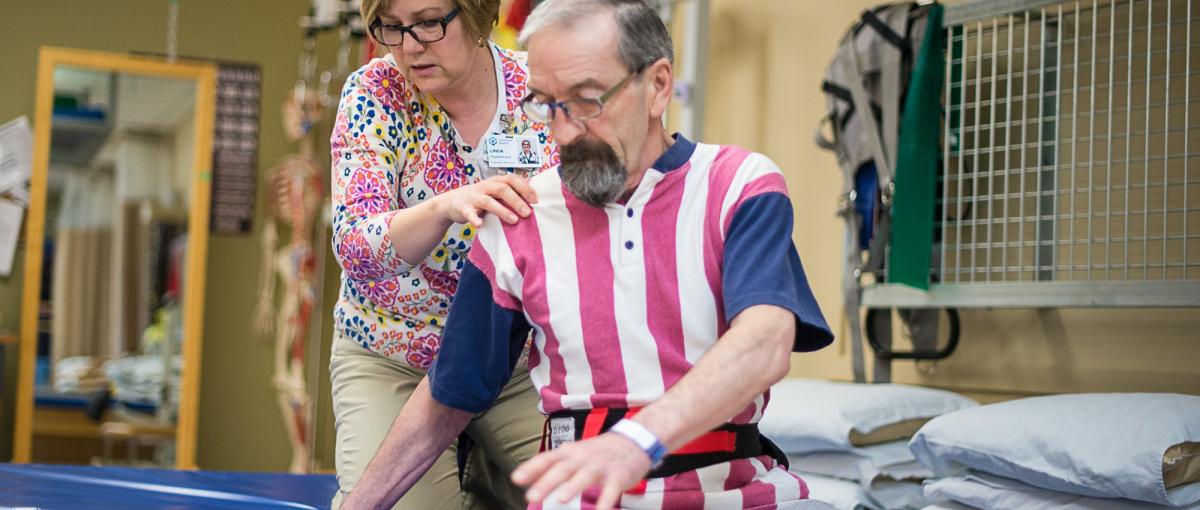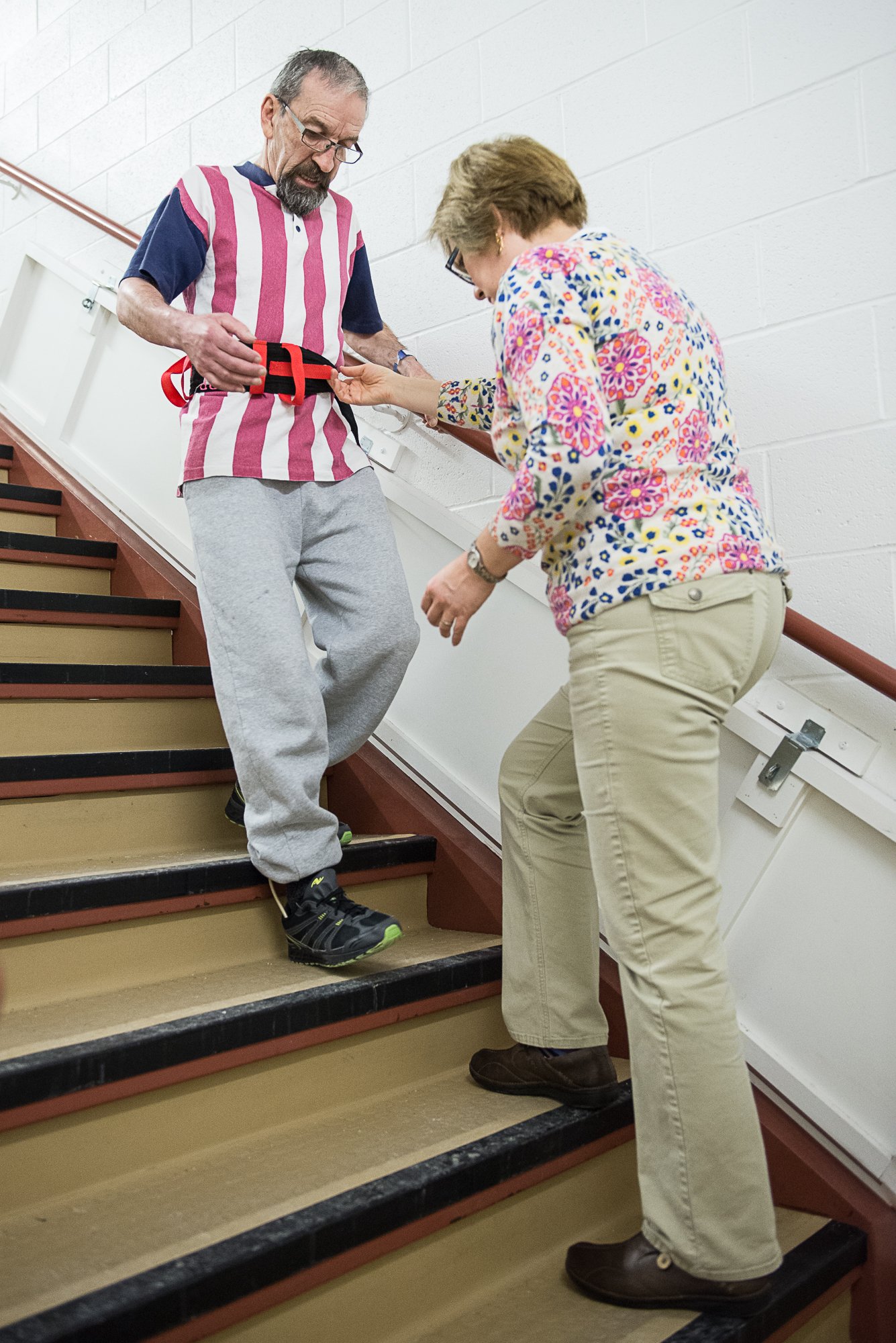Discovering a new normal, one step at a time

April 3, 2017
By Karen Diaper, Communications Manager, Covenant Health
Walking into the Post-Acute Rehabilitation program (PARP) at St. Michael’s Health Centre (SMHC), you are immediately drawn into the hive of activity as patients participate in their daily therapies.
Rodney Forbes is waiting to meet with his physiotherapist Linda for their daily session.
“Today is exactly eight weeks since I had my stroke,” says Rodney.
“I had my stroke in the middle of the night,” remembers Rodney. “I woke up and I laid there for about half an hour just imagining that my life was going to be like that for the rest of my days, not being able to walk or talk again.”
Following an initial hospital stay in Calgary, Rodney was transferred to SMHC to begin rehabilitation.
"A feeling of fulfilment came back because I realized there was something that could be done with my speech and with my walking. That was the best feeling I’ve ever had.”
PARP is an intensive, inpatient rehabilitation program for people who still require nursing care 24/7 and also need to be rehabilitated in an intensive fashion. During their stay, residents receive two to three hours of rehabilitation per day.
The care team includes 12 different professions.

“We look at the whole person,” explains James Ostoya, PARP Manager. “Many issues are physical or cognitive and are taken care of by physiotherapists and occupational therapists. Speech-language pathologists deal with individuals who have speaking issues, usually after a stroke. We have recreation therapy, which fine-tunes some of the things that PTs and OTs are working on. Each discipline offers a different perspective on the rehabilitation journey.”
Also on the team are a registered dietitian and a pharmacist to recommend proper nutrition and medications.
Rodney receives many therapies to assist in his recovery, including an electrical stimulator on his forearm. This stimulates movement of the wrist, because when you have a stroke and part of the brain is damaged, the message is interrupted.
“Part of what we are trying to do after a stroke is stimulate plasticity of the nervous system. When parts of the brain have been injured by the stroke, other parts can take over for the injured areas,” explains Linda Wiebe, Physiotherapist at SMCH.
“The stairs are a great therapy activity, as it forces Rodney to put weight on that right leg as he's stepping with his left. Having to step up also is a facilitatory technique to stimulate stepping activity. He's had really great recovery so we've been able to challenge him,” says Linda.
“We try to incorporate as many of the activities he wants to into our therapy. Rodney lives on an acreage, so as soon as the weather is better we will work on some outdoor walking as well.”
“What we’re trying to do in his physiotherapy sessions is stimulate recovery through different activities. I'm focusing on mobility, getting him standing and walking as soon as possible after his stroke.”
“It just blows me away that the brain would do that,” laughs Rodney.
“You know, life is always changing and you never know what to expect,” reflects Rodney. “Life can change so quickly and you have to accept that. Because if you don't accept then it's going to get you down. You have to be happy with whatever it is, your new normal. I think that's the biggest thing with therapy—to be accepting, be happy, enjoy a laugh.”